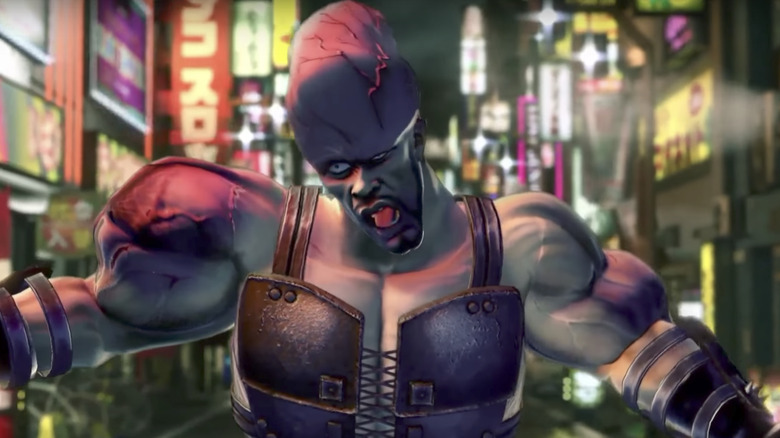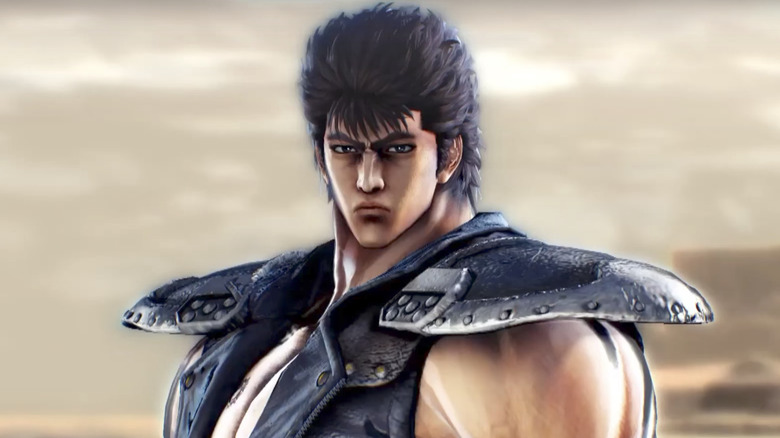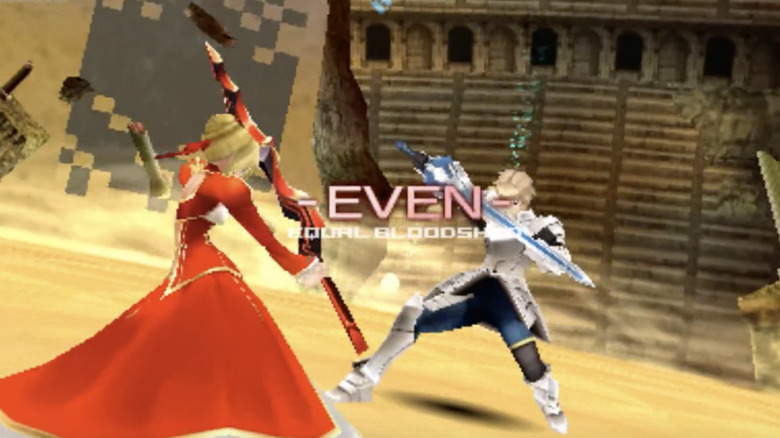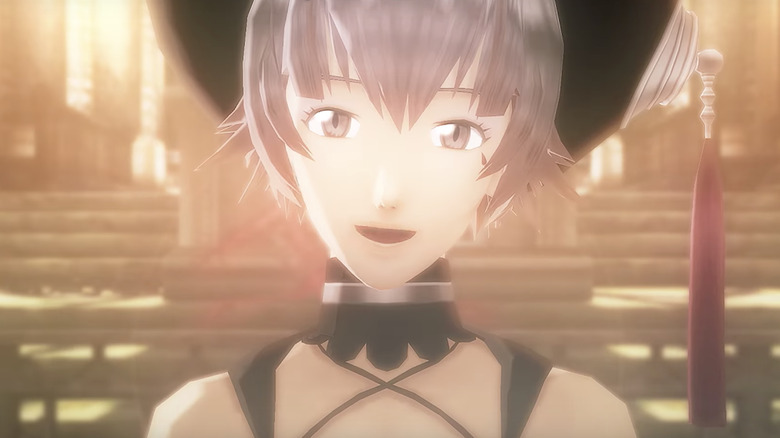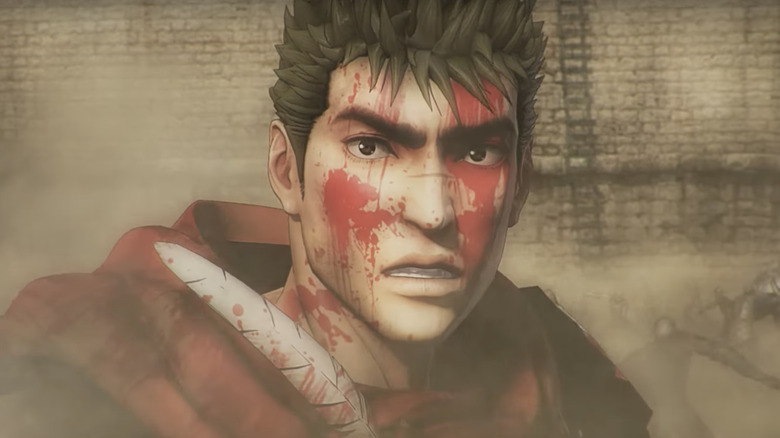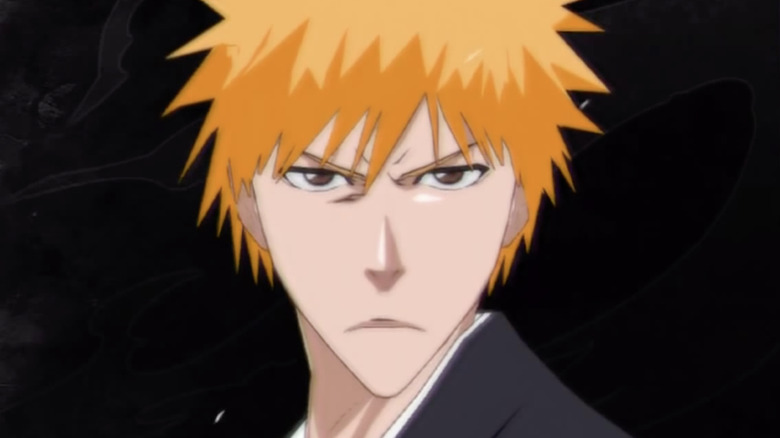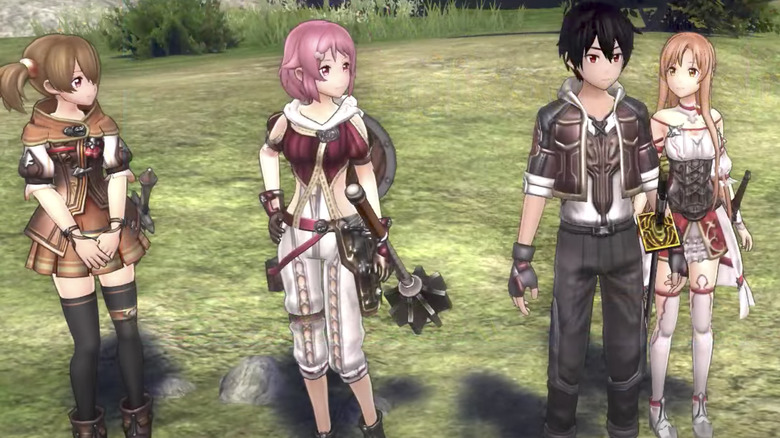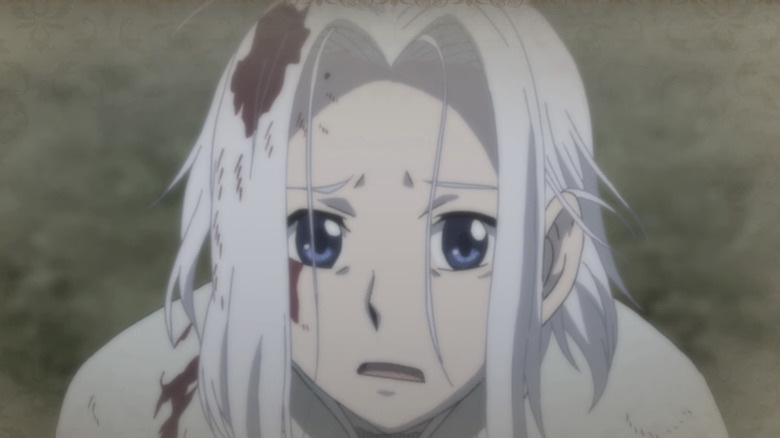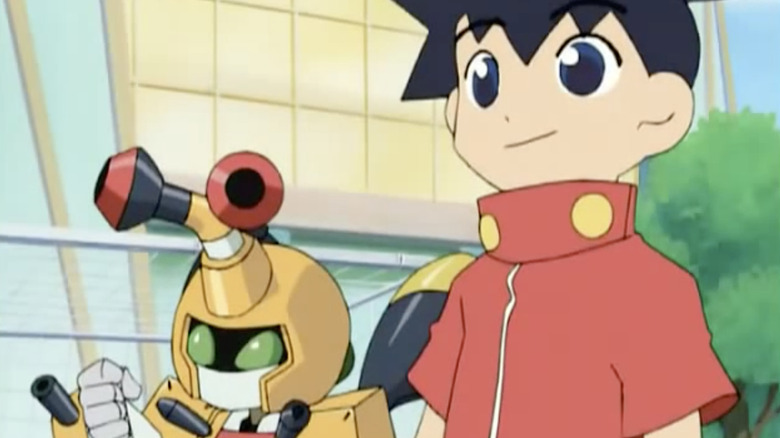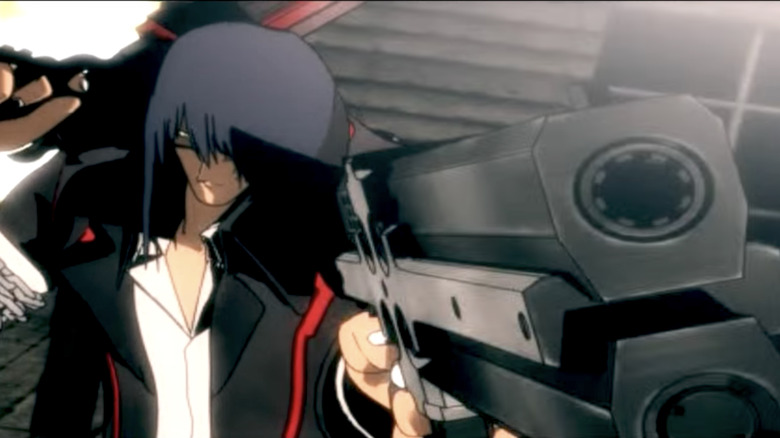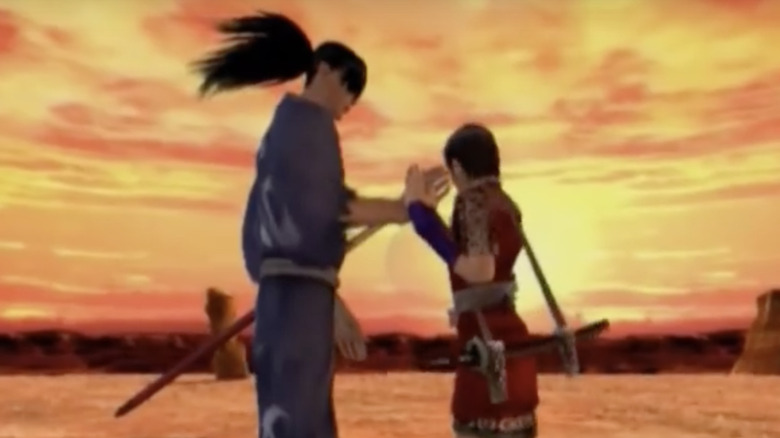Video Games You Didn't Know Were Based On Anime
Love it or hate it, anime has had a place in the global pop culture pantheon since Osamu Tezuka's Astro Boy charmed viewers in 1963. And with Japan's unique take on animation inevitably debuting on small screens across the United States in the ensuing years, it was only a matter of time before spiky-haired fan-favorites like Goku and Ash Ketchum found their way into other forms of entertainment—namely, video games.
Multimedia anime franchises like Pokémon, Digimon, and Yu-Gi-Oh! proved successful—and profitable—due in no small part to name recognition. But not every anime-inspired game's source material is obvious, especially to gamers without a personal library bursting with seinen manga and Dragon Ball box sets. From throwback fan faves adapted for contemporary consoles to obscure gems inspired by shows that just never caught on in the States, here are 10 games you didn't know were based on anime.
Hokuto Ga Gotoku (Like the North Star)
The words, "You are already dead" may not mean much to the majority of gamers without a degree in otaku studies, but button-mashers also boasting a love of old-school anime and manga will immediately Fist of the North Star protagonist Kenshiro's catchphrase.
When Sega revealed they'd be adapting the beloved anime for the PS4 during an August 2017 livestream from Tokyo's Akihabara UDX Theatre, they took an interesting approach to the announcement—one that surely baffled many fans unfamiliar with the IP. It's safe to say that longtime Yakuza fans, treated to what appeared to be a teaser for the next entry in the series, were a little perplexed when main protagonist Kiryu Kazuma transformed into a 'roided-out Mad Max cosplayer. Little did they know they were getting their first sneak peek at Sega's take on an anime classic.
First appearing in manga form in Weekly Shōnen Jump in 1983, Fist of the North Star (Hokuto no Ken in Japan) chronicles the travels of the stoic Kenshiro as he scours a post-apocalyptic world, defending the weak and popping heads like over-inflated balloons. For some reason, that sounds like the perfect project for a studio whose games regularly feature shirtless, middle-aged men lobbing bicycles at one another in crowded Tokyo intersections.
Fate/Extra
Fate/Extra is a PSP dungeon crawler that puts players in control of one Hakuno Kishinami, a student and recent amnesiac at Tsukumihara Academy—a virtual realm created by an alien supercomputer on the moon to recreate "The Holy Grail War," pitting combatants against one another for the chance to have their greatest wish granted. So, a typical JRPG.
If you're unfamiliar with Fate/Extra, take comfort in knowing you're not alone. According to VGChartz, as of July 2017, the Type-Moon and Image Epoch collaboration only sold around 190,000 copies in the States. This may have something to do with the fact that critics found its presentation "forgettable" and have compared its main protagonist to a mannequin. Or it could have something to do with the fact that the game (which was preceded by a massive number of spinoffs, prequels, anime adaptations, and light novels) is set in a parallel universe of the obscure visual novel that started it all—the similarly inexplicably-named Fate/Stay, which just happened to start its life as an, ahem, eroge, or "erotic game."
.hack
The .hack franchise boasts countless spinoffs, numerous novels, manga, mobile games, and even a playing card game—so, needless to say, diving into this multimedia franchise can be daunting. In fact, just determining which incarnation of the faux MMO came first—and what order to go about watching and playing its many projects—is nearly impossible without help. Add to the mix a multi-layered plot that revolves around players in an in-universe video game—along with a short-lived real-life MMORPG based on the fictional MMORPG at the center of the anime—and things get really meta (in the best way possible).
While a single-player experience, .hack mimics the gameplay style of real MMORPGs, immersing players in a sprawling world that resembled the .hack universe's lazily-titled "The World." But it was actually the anime, .hack//Sign, that introduced otakus to archetypal cynic-turned-hero Tsukasa two months before Kite and BlackRose set out to find a cure for their loved ones' MMO-induced comas in the four-game .hack PS2 series.
Berserk and the Band of the Hawk
When you name your game Berserk and the Band of the Hawk, you'd best take your responsibilities seriously—chief among them delivering skull-crushing, blood-spraying hack-and-slash action along with a gripping gothic tale of an anti-hero's rise to infamy. That's precisely what developer Omega Force offers in their 2017 Dynasty Warriors-style game, and although it was greeted with mixed reviews. critics praised the engaging story, which chronicles protagonist Guts' growth from angsty young mercenary to vengeance-fueled warrior.
This isn't the first time gamers have jumped into Guts' skin (enjoy that metaphor). He's also delivered his patented brand of viscera-splattered justice in 2000's Sword of the Berserk: Guts' Rage for the late Sega Dreamcast and 2004's Berserk: Millennium Falcon Hen Seima Senki no Shō—a Japan-only release. But while he's collected his fair share of pixelated scalps, anime fans have a much deeper relationship with the merciless merc—in fact, he's an anime icon, boasting nearly 30 years of notoriety in Kentaro Miura's legendary Berserk manga.
Bleach
Here's a challenge: try taking two steps in Japan without tripping over a Shonen Jump character. From DVDs to collectible figurines—from comics to body pillows—the Land of the Rising Sun loves it some serialized Super Saiyans and Soul Reapers. Popular manga and anime Bleach is no exception, with series antihero Ichigo Kurosaki's likeness appearing in a number of adaptations of the supernatural action series—including, of course, video games.
The majority of Bleach's video game incarnations have yet to make their way overseas—and it's unlikely that they ever will. However, a handful of entries have been localized, including Nintendo DS titles like Bleach: The Blade of Fate, Bleach: Dark Souls, and Bleach: The 3rd Phantom (released in 2007, 2008, and 2009, respectively).
Despite the manga series' popularity in Japan—and fairly large following in the States—casual gamers more acclimated to racking up headshots in Call of Duty would be entirely forgiven for mistaking any of Bleach's video game adaptations for just another fighting game from the Far East.
Sword Art Online
Like .hack, the Sword Art Online games are unique in that they take place inside an MMORPG realm within the greater Sword Art Online reality. As such, it's not a stretch to think that a casual gamer might mistake the latest entry in this multi-game series, Sword Art Online: Hollow Realization, for an original IP—especially considering how well the game imitates the user interface of a real MMO. After all, it boasts a "chat" window that doubles as an event log, an immense open world, and enough MMO lingo to fill a GameFaqs walkthrough.
In reality, Sword Art Online began as a "light novel," a novel with manga-style illustrations that accompany its story. It was later adapted into a manga, then a well-received anime in 2012, and, finally, a series of video games that began with 2013's Japan-only Sword Art Online: Infinity Moment.
Arslan: The Warriors of Legend
It's ironic that the more accurately a video game adaptation captures its source material's spirit, aesthetic, and story, the less it feels like an adaptation—and the more it feels like its own standalone game. Such is the case for 2016's Arslan: The Warriors of Legend, a Warriors-style hack and slash hit celebrated for its fantasy setting, engaging story, varied cast of characters, and satisfying battle system.
Like Berserk and the Band of the Hawk—another collaboration between Dynasty Warriors developer Omega Force and a popular anime franchise—Arslan managed to tell a sweeping standalone story that hit all the right notes from the anime without requiring players to have prior knowledge of the franchise.
Interestingly, Arslan: The Warriors of Legend is only the latest in a string of multimedia adaptations of the title character's adventures. In fact, the anime the game is based on was inspired by a popular manga which itself had been adapted from a 15-book series of epic fantasy novels by author Yoshiki Tanaka.
Medabots
Like the Pokémon games that came before it, Medabots (Medarots in Japan) took a simple idea—customizing and battling personal robots—and turned it into a minor cultural phenomenon that captivated Japanese Game Boy players willing to give the lesser-known franchise a shot. In 1999, two years after its initial Japan-only release, Medabots finally reached Western Game Boy Advance players in the form of Medabots: Metabee and Medabots: Rokusho to mixed response. By combining traditional JRPG elements like random encounters and a world map with quirky characters and a unique battle system, Medabots looked and played like a decent alternative to the vastly more successful Pokémon franchise.
But what many Medabot fans may not have realized was that they could catch their favorite short-fused battle bots every Saturday morning on Fox Kids. Just like Pokémon, which dominated the small screen on Kids WB, Medabots boasted its own anime adaptation. The show garnered Fox Kids some of its highest ratings, but, without the name recognition enjoyed by Ash Ketchum and his cuddly companions, Medabots' television show and games have fallen by the wayside.
Gungrave: Overdose
Gamers with a penchant for perusing the bargain bin might be familiar with a little-known gem named Gungrave. A stylish tale of murder, resurrection, and revenge, what this obscure 2002 third-person shooter lacked in length and replay value, it more than made up with a hefty dose of personality and artistic flair courtesy of renowned manga artists Yasuhiro Nightow (Trigun) and Kōsuke Fujishima (Oh My Goddess!).
While Gungrave originally debuted as a video game, it looked and felt like an anime—in no small part due to the involvement of its mangaka designers. So it came as no surprise when it inspired a 2003 animated retelling that delved further into protagonist Grave's backstory.
Gungrave went on to spawn a sequel in 2004—Gungrave: Overdose, which was heavily influenced by its predecessor's anime adaptation. The PS2 exclusive, which received slightly higher reviews than its precursor, followed the next chapter in the life of token undead assassin Beyond the Grave (yes, that's his full name) as he took up his coffin-shaped machine gun/rocket launcher one last time. His new mission? Stopping a mutagenic drug called "Seed" from taking over the planet. What a life.
Blood Will Tell: Tezuka Osamu's Dororo
If you recognize the name Osamu Tezuka, it's probably not because you played the aggressively obscure Blood Will Tell: Tezuka Osamu's Dororo. Chances are, it's because you're familiar with Tezuka's most famed creation, Astroboy.
But few outside otaku circles realize that Tezuka's work extends far beyond the trials and tribulations of the iconic young cyborg. In fact, much of the late illustrator's work embraced darker, more adult themes—from the nudity-ridden The Book of Human Insects to Ode to Kirihito, Tezuka's personal exploration of self-discovery as a result of trauma and corruption in the medical industry.
Another one of his most popular works, Dororo—which ran from 1967 to 1968—centered around a rōnin named Hyakkimaru on a quest to slay 48 demons and reclaim his lost body parts. Dororo was adapted into a beloved anime, and, almost 40 years later, it was reimagined as an action-packed, Sega-developed PS2 exclusive with realistic graphics, bazooka arm attachments, and...a slew of mediocre reviews.

